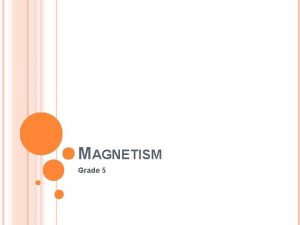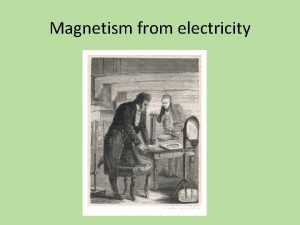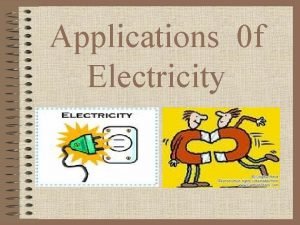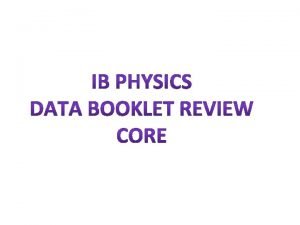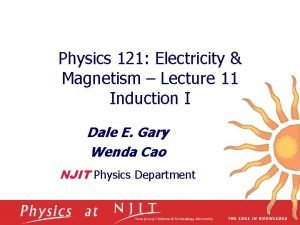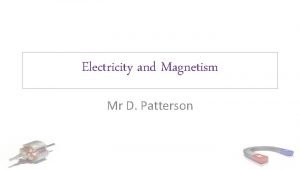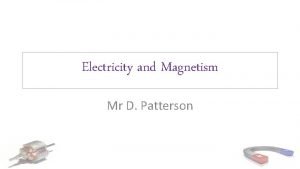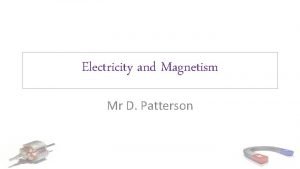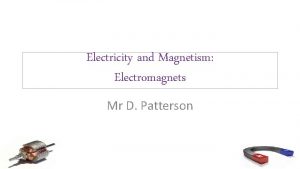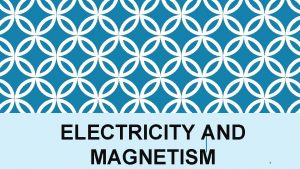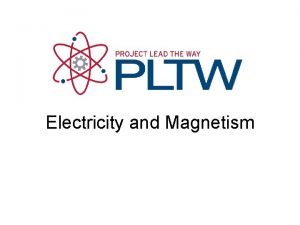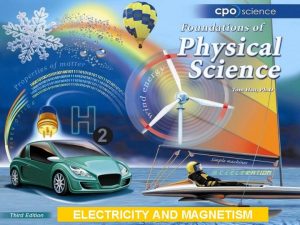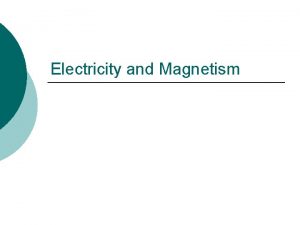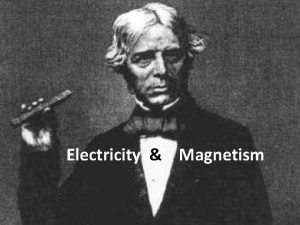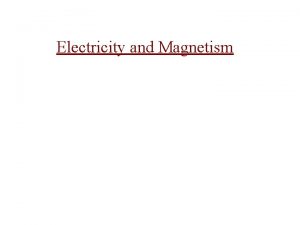Electricity and Magnetism Mr D Patterson Outcomes apply














- Slides: 14

Electricity and Magnetism Mr D. Patterson

Outcomes • apply the concept of force on a charged particle moving through a magnetic field—this will include applying the relationships: • describe the factors which affect the magnitude and direction of the force on a charged particle moving through a magnetic field

Electric charge and magnetism N F (into page) Moving charges create a magnetic field. In The theresult? presence A force of an is external applied to magnetic the moving field, the two charges. fields interact.

What determines the force? A larger current produces a larger magnetic field, which produces a larger force A larger current can be produced by : 1) having more charges moving at the same speed 2) having the same number of charges but moving faster

What determines the force? A larger current can be produced by : 1) having more charges moving at the same speed 2) having the same number of charges but moving faster Therefore the force (which depends the current) depends on 1) the velocity of the charge 2) the quantity of the charge

Formula • An electric charge, moving perpendicular to an external magnetic field will experience a force F is the force on the charge (N) q is the charge (C) v is the velocity of the charge (ms-1) B is the size of the external magnetic field (T)

Formula This formula, Uses the same principles as the force acting on a current carrying conductor, But only determines the force on a single charge!

Direction of the force The direction of the force is determined by using the right hand palm rule

Example problem The proton in the diagram is travelling at 1200 ms-1 through a magnetic field of 800 μT. Determine the force applied to the proton and draw the path the proton would take.

Circular motion A charge moving in a magnetic field will experience a force perpendicular to its motion. This is the principle of circular motion.

Circular motion The force felt by a charge only depends on q, v and B. If a hydrogen ion (H+) and a lithium ion (Li+) both travelled at the same speed into a magnetic field, how would their paths differ?

Circular motion The force felt by a charge only depends on q, v and B. If a sodium ion (Na+) and a magnesium ion (Mg 2+) both travelled at the same speed into a magnetic field, how would their paths differ?

Practical Uses – Mass Spectrometer

Example Problem • A proton has a velocity of 5670 ms-1. It is passing through a magnetic flux density of 38 T. What is the direction and magnitude of an electric field that could be used to allow the proton to travel in a straight line?
 Physics 102
Physics 102 Topic 5 ib physics
Topic 5 ib physics Electricity and magnetism lecture notes
Electricity and magnetism lecture notes Electricity and magnetism jeopardy
Electricity and magnetism jeopardy Sph3u electricity and magnetism
Sph3u electricity and magnetism Electromagnet experiment hypothesis
Electromagnet experiment hypothesis Magnetism and electricity
Magnetism and electricity Magnetism grade 5
Magnetism grade 5 Electricity and magnetism
Electricity and magnetism Electricity and magnetism
Electricity and magnetism Electricity and magnetism
Electricity and magnetism Electricity and magnetism
Electricity and magnetism Electricity and magnetism
Electricity and magnetism Electricity and magnetism vocabulary
Electricity and magnetism vocabulary Cross apply vs outer apply
Cross apply vs outer apply







